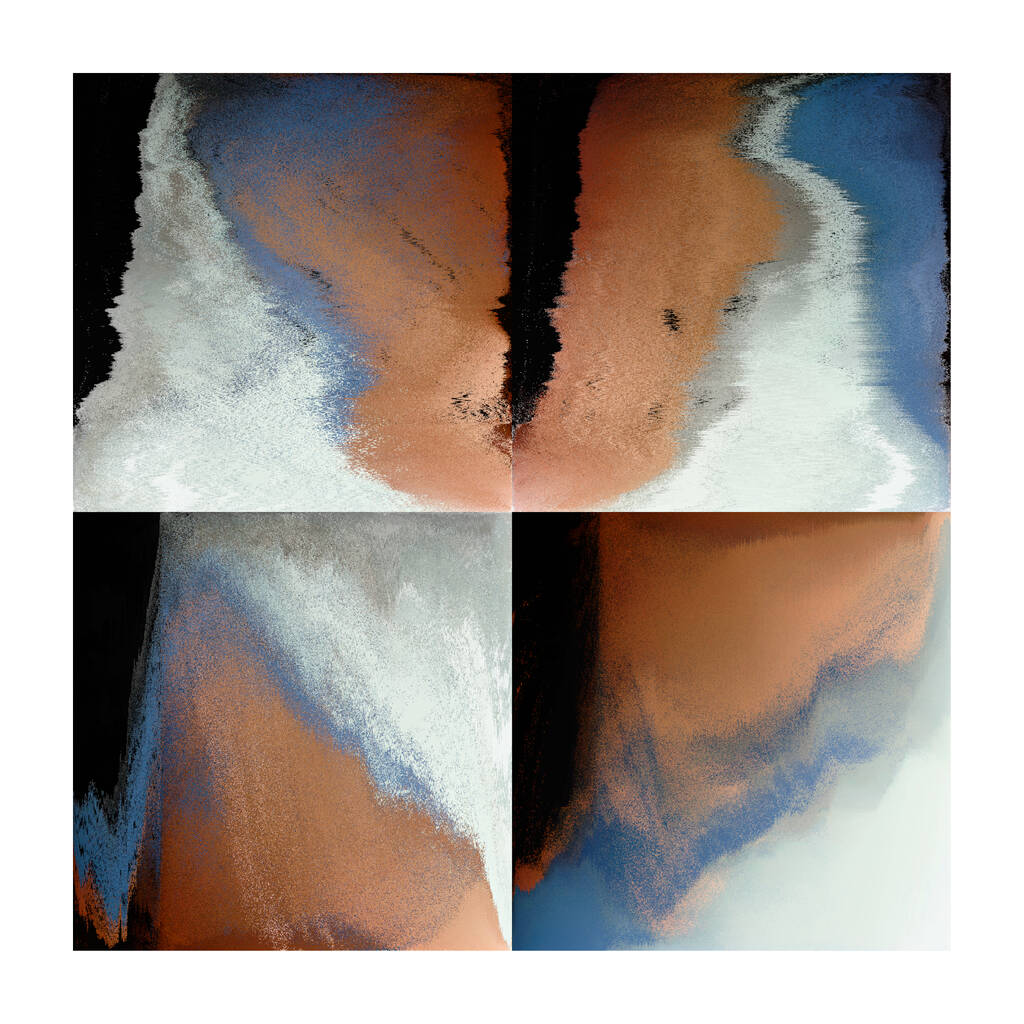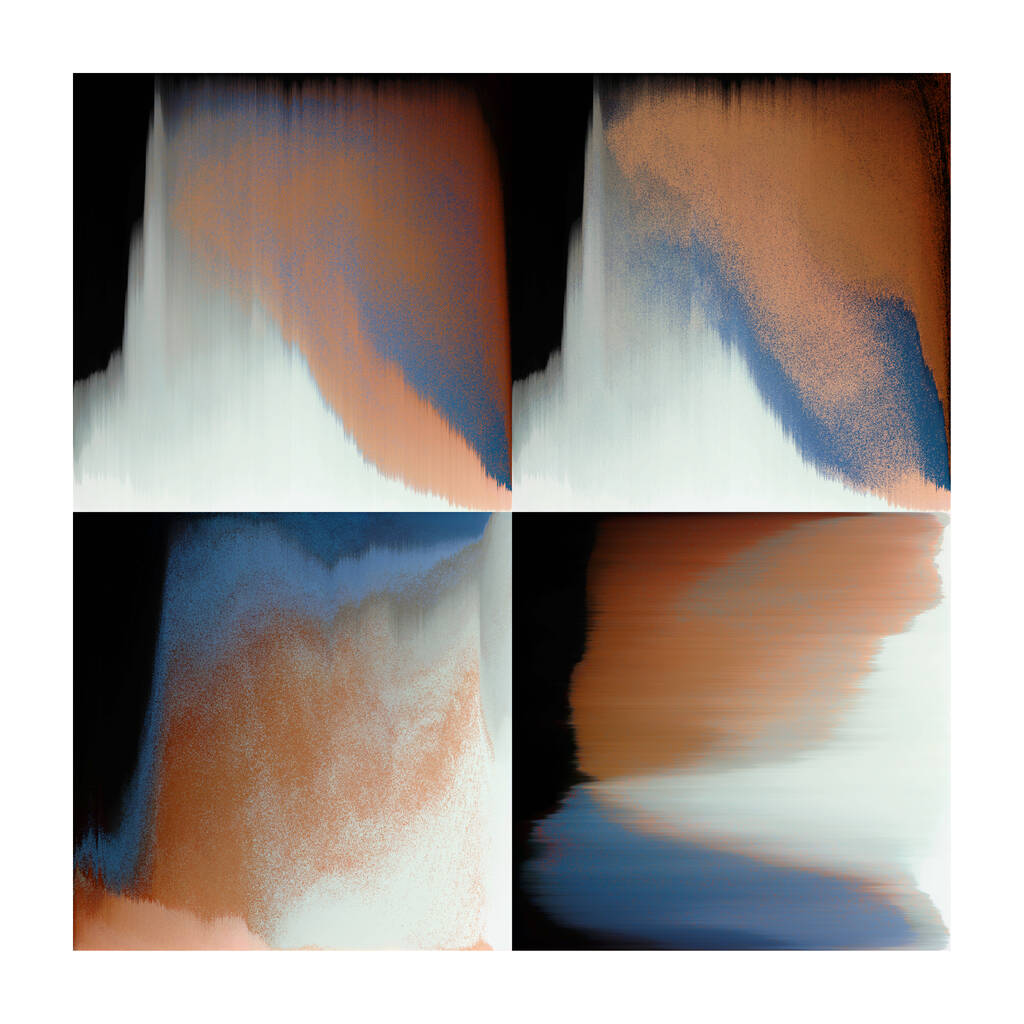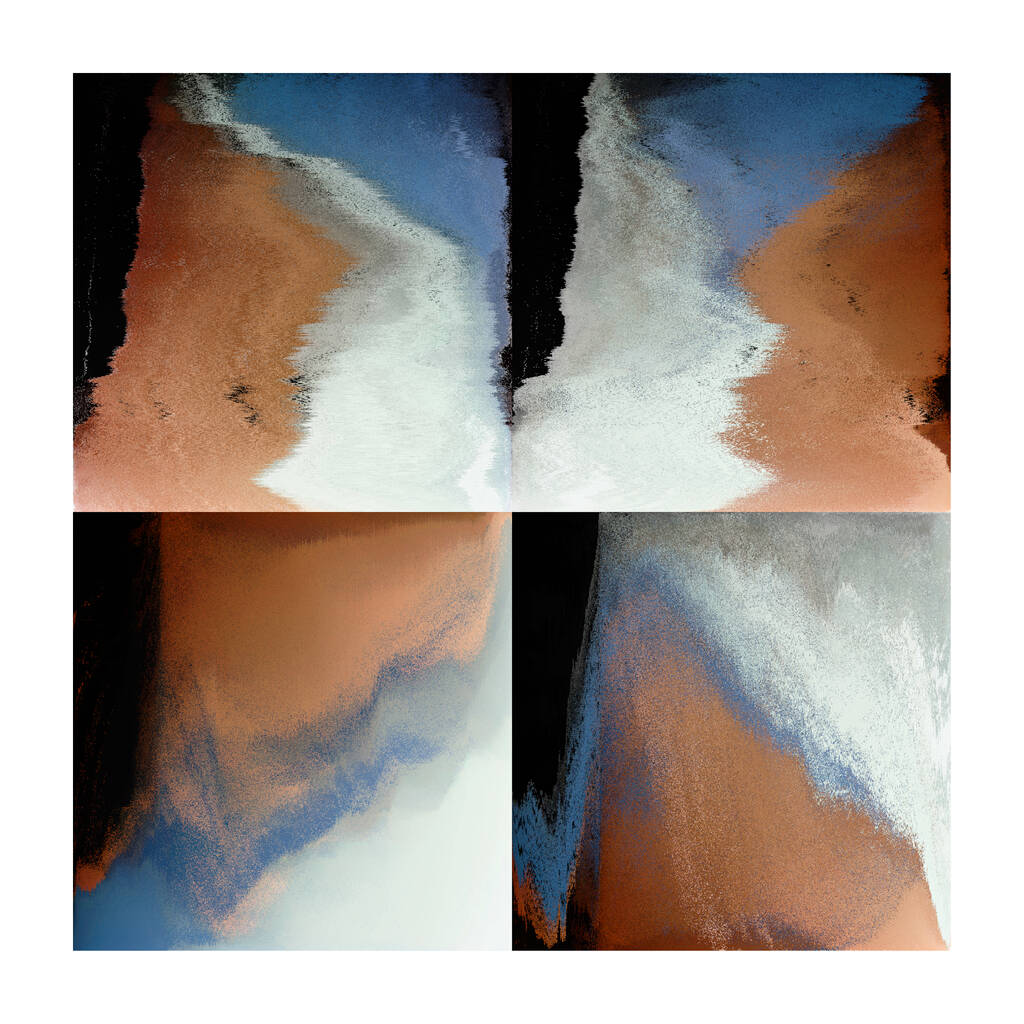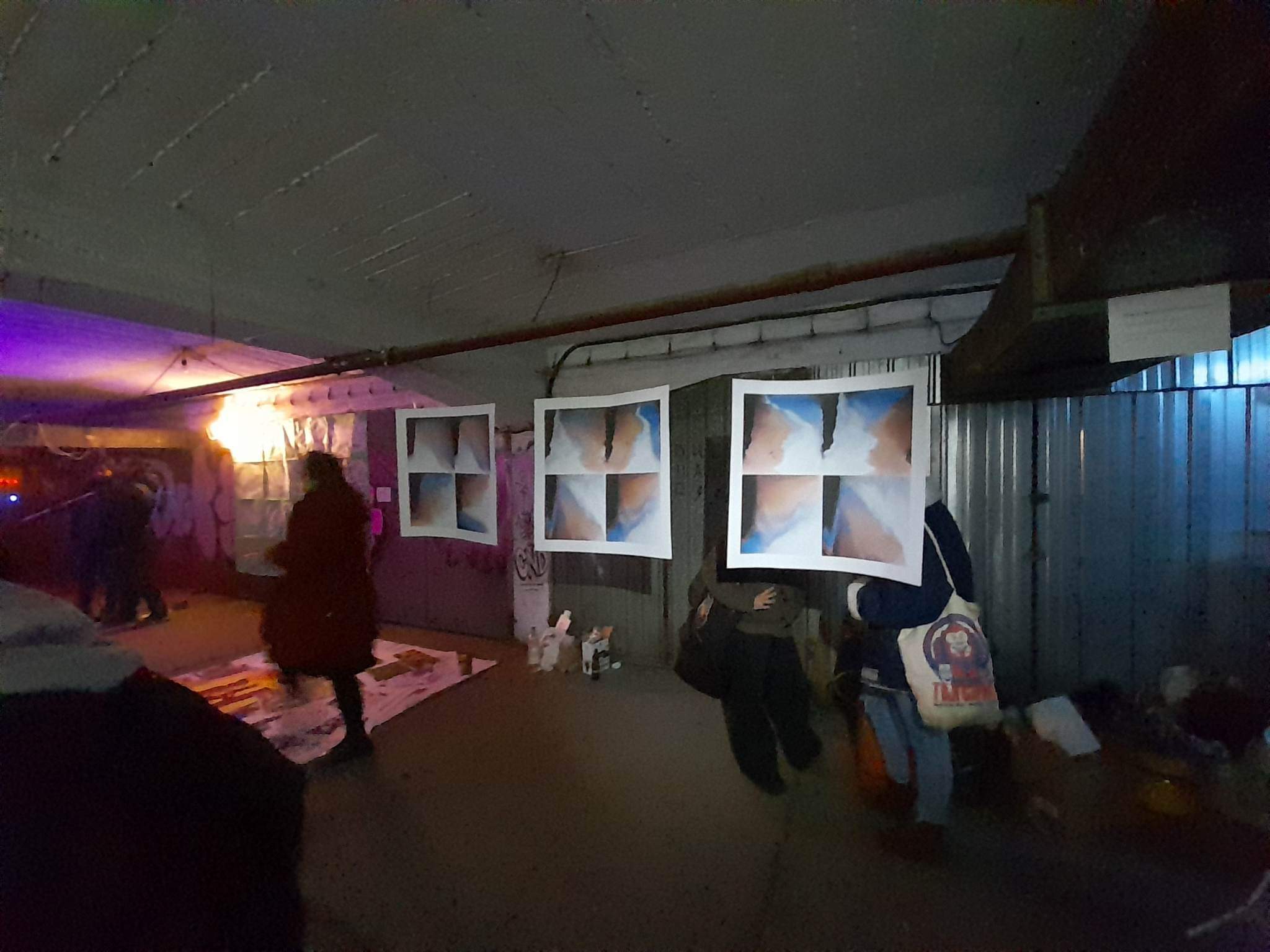Breath of life and death, 2022
Digital C-type prints (x3) 70 x 70 cm.
The triptych explores the notion that breath indicates the beginning and, through its absence, the end of life. A photograph is imagined as if it were composed of tiny coloured grains of sand. The artist could gently blow over the surface of the image and rearrange the sand to form new works. Whatever was depicted in the original image is lost, but its essence remains in the new configurations. In this case, the artist has rearranged individual pixels of a digital image using programming logic and execution of sets of rules. No pixel is lost or altered in this process and only its coordinate position is changed.
The source image for these works is an appropriated portrait of Mary Teresa Bojaxhiu ("Mother Teresa"), an Indian-Albanian Catholic nun born in Skopje in 1910. Despite being canonised as Saint Teresa of Calcutta, she was not without her critics. Among them was public intellectual Christopher Hitchens who rejected the notion that she was a champion of the poor but rather a champion of poverty itself, and that Teresa's Calcutta clinic accelerated the deaths of thousands of sick and elderly patients by withholding medical treatment because "the sick must suffer like Christ on the cross".
Religious traditions link breathing with God, who gives the "breath of life" and thus a "living soul" to mankind. Breathing marks the beginning of life, and when we die, we breathe our last breath. The triptych invites us to meditate on the reality that we will all turn to dust and be gently blown away by the breath of time.This work was shown in Skopje, North Macedonia on 24 December 2022, as part of the annual pop-up festival It's easier to breathe underground. More exhibition images are shown here courtesy of Popup Magazine.





